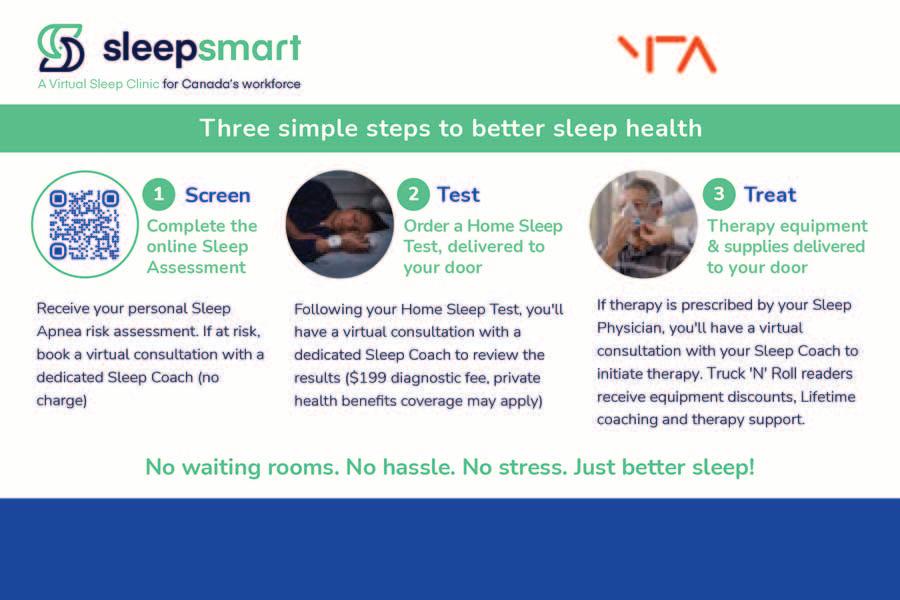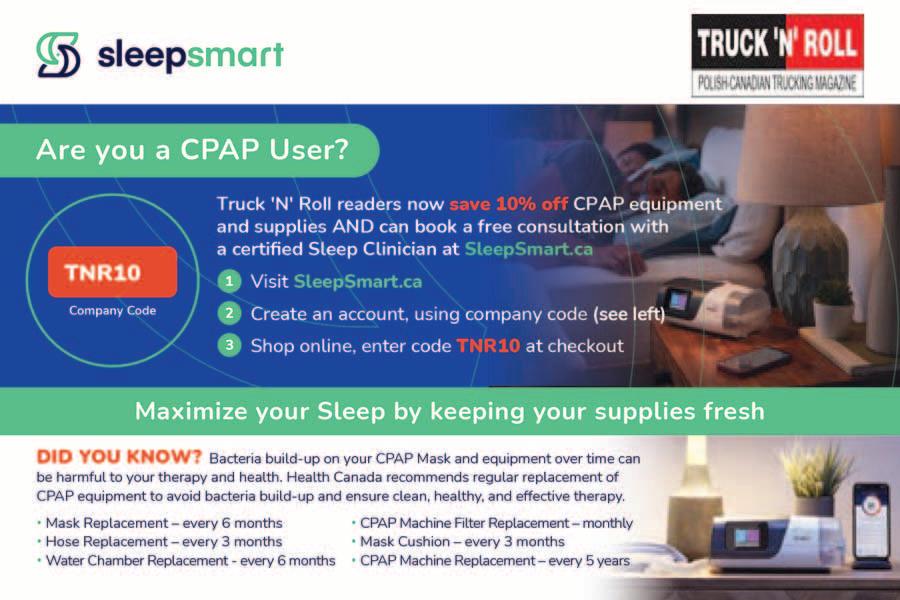
1 minute read
UNTREATED OBSTRUCTIVE SLEEP APNEA (OSA) POSES SIGNIFICANT HEALTH RISKS
BY DAPHNE MONTGOMERY Director of Sales at SleepSmart
Sleep is an integral part of a happy and healthy lifestyle; however, most Canadians report that they sleep poorly. The short, medium and long term risks involved in poor quality or quantity of sleep are numerous. These include cognitive dysfunction, daytime sleepiness and increased rates of cold/flu, high blood pressure, diabetes, heart disease, cancer and depression. It's estimated that approximately 25% of Canadian adults have sleep apnea and of those about 80% are undiagnosed.
Advertisement
Obstructive sleep apnea is caused by a blocked airway during sleep; throat muscles relax and the tongue or fatty tissue blocks airflow, restricting oxygen and blood flow. Our brain responds by awakening the body through a chemical reaction and activating the throat muscles for resumed breathing. Depending on an individual's severity, this process may occur hundreds of times per night. Common symptoms are snoring, excessive daytime sleepiness, high blood pressure, morning headaches, depression and irritability.
The physical and mental impacts to a person with untreated sleep apnea are:
3.7x increased stroke risk
3x increase in cancer mortality
Increased risk of diabetes
Increased blood pressure and incidence of cardiovascular disease
50% increase in psychological distress
3x likelihood of sleeping apart from their spouse and rate of divorce
The impacts on workplace safety are:
70% higher likelihood of a workplace accident
2x higher likelihood of a fatal workplace accident
The impact on driving safety can be deadly:
5x rate of preventable accidents
Sleep apnea is a serious but highly treatable condition. The current pathway to treatment involves identifying risk for sleep apnea through a screening questionnaire, completing an in-lab sleep study or home sleep test, having results reviewed by an accredited sleep physician and being set up on therapy if prescribed. The gold standard therapy for sleep apnea is Positive Airway Pressure (PAP) Therapy. PAP is delivered via a bedside device connected to a tube and mask. Depending where you reside in Canada, this process can take 4-18 months and involves taking time off work for each of the steps.
Understanding the importance of sleep health and the adverse health effects when left untreated SleepSmart has developed a highly accessible virtual 3-step program. We use the latest diagnostic, therapeutic and telehealth technology without ever having to visit a waiting room or overnight sleep facility. Individuals can go from screening to therapy in 7-15 days.
If an individual has concerns that they, or someone they know, may be afflicted with sleep apnea, completing a screening questionnaire would be recommended as a first step. The results will assist with directing next steps if necessary. If you are already a CPAP user, please see the ad below to take advantage of our preferred pricing offer.









